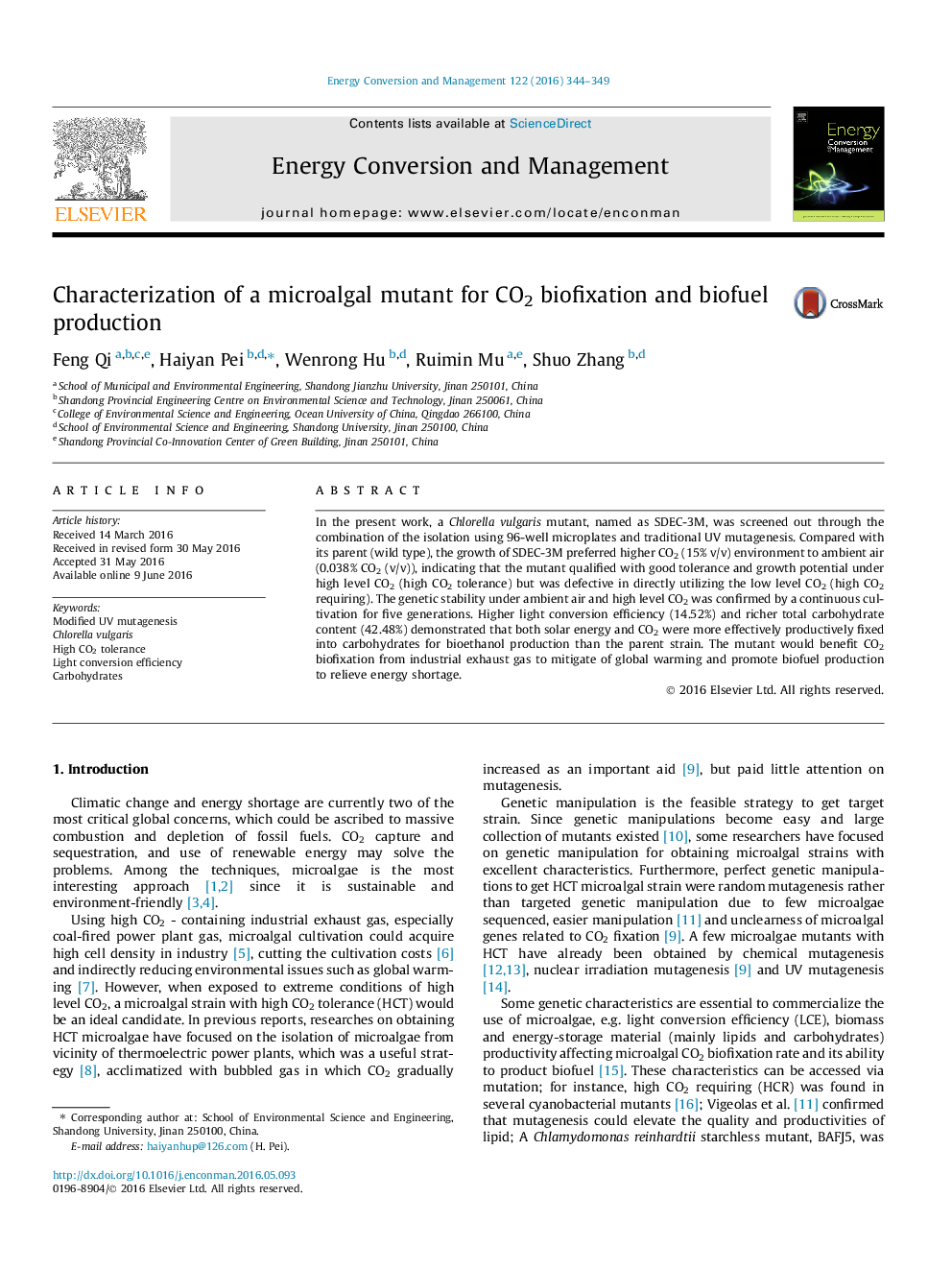| Article ID | Journal | Published Year | Pages | File Type |
|---|---|---|---|---|
| 7160287 | Energy Conversion and Management | 2016 | 6 Pages |
Abstract
In the present work, a Chlorella vulgaris mutant, named as SDEC-3M, was screened out through the combination of the isolation using 96-well microplates and traditional UV mutagenesis. Compared with its parent (wild type), the growth of SDEC-3M preferred higher CO2 (15% v/v) environment to ambient air (0.038% CO2 (v/v)), indicating that the mutant qualified with good tolerance and growth potential under high level CO2 (high CO2 tolerance) but was defective in directly utilizing the low level CO2 (high CO2 requiring). The genetic stability under ambient air and high level CO2 was confirmed by a continuous cultivation for five generations. Higher light conversion efficiency (14.52%) and richer total carbohydrate content (42.48%) demonstrated that both solar energy and CO2 were more effectively productively fixed into carbohydrates for bioethanol production than the parent strain. The mutant would benefit CO2 biofixation from industrial exhaust gas to mitigate of global warming and promote biofuel production to relieve energy shortage.
Related Topics
Physical Sciences and Engineering
Energy
Energy (General)
Authors
Feng Qi, Haiyan Pei, Wenrong Hu, Ruimin Mu, Shuo Zhang,
